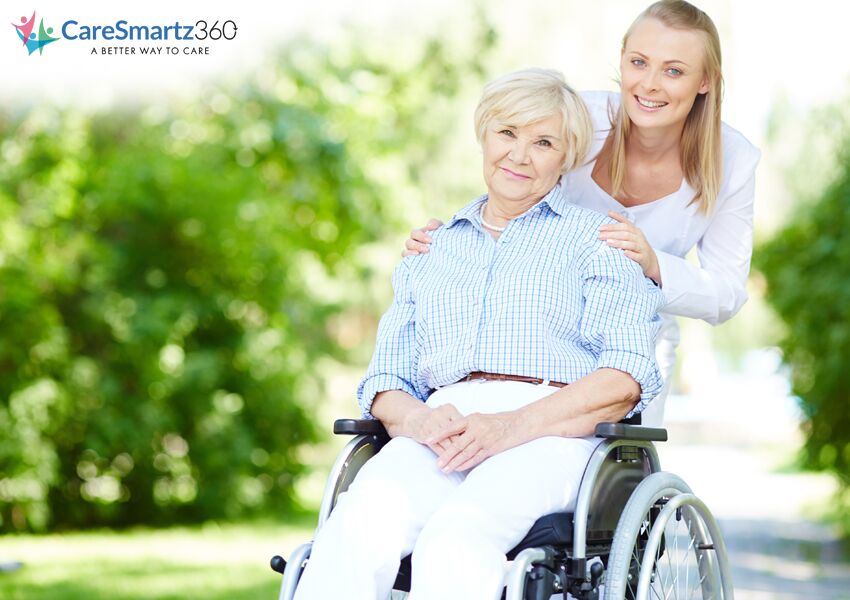
Not just the home care agencies, rather, the entire senior care industry was ravaged by the novel Coronavirus, killing tens of thousands of seniors.
Due to the increasing number of infected patients every day in hospitals and long-term care facilities, seniors and their family members are choosing home care as a safe and affordable option for their emotional, physical, and mental well-being.
Home care allows seniors to stay isolated from those who might spread the virus and infect them. Even the caregivers visiting to deliver care services are asked to take proper precautions and sanitize themselves before entering the residence of seniors.
Since the outbreak of Covid-19, in the U.S. alone, it has claimed nearly 255,850 lives and exceeded 12,276,834 confirmed cases so far. To know how much the world is being affected as of today, you can see the numbers live at WHO Coronavirus Disease (COVID-19) Dashboard.
Unlike any other epidemic the world has witnessed, Covid-19 touched every habitable continent in just a few weeks, bringing down the entire health care system’s ability to test, track, and contain the suspected infection. The only miracle that brought hope for a cure and a sigh of relief among the infected across the world is the technology.
Irrespective of how the technology was used earlier, the novel Corona virus pushed health care organizations to develop, transition, and adapt technological solutions to curb the risks of infection among those on the frontline of health care delivery and manage the infrastructure crisis for thousands of those who were tested positive for the infection. The mandatory lockdown and temporarily-closed businesses brought the possibility of exploring and utilizing pre-pandemic technology in the post-pandemic situation.
Just a few weeks before the pandemic struck, Beth Hale, 71, selected a home care agency and was all set to welcome a professional caregiver to help her 78-year-old husband, Stephane, who has dementia and had heart surgery a year ago. But after the Covid-19 outbreak, she decided to wait and canceled the agency services due to the rising number of people being tested positive for the infection in her location, and some of them she knew lost their lives.
Now, when she needs the services of home care providers, the first thing she asks:
From surviving to thriving, the home care industry has accelerated the willingness to embrace mainstream technologies. From telehealth to voice-enabled tech, chat bots, virtual assistants, and remote monitoring, these agile technologies are being tailored to command and control things within the new ecosystem of health and home care delivery.
Agencies are extensively remodeling their home care software to mitigate the risks of transmission and keep their caregivers and patients as safe as possible. Caregivers take temperature and assess their wellness periodically through the software. Patients are also screened using the Centers for Disease Control and Prevention (CDC) protocols before in-home care services are provided. Wherever possible, caregivers are also providing care to seniors over the phone and video calls. However, there is also a Framework for Healthcare Systems Providing Non-COVID-19 Clinical Care to determine when in-person care is appropriate.
Yes, it will be different than it was before the viral outbreak as well as after the virus is contained. Technology will play a crucial role in this change. Seniors will be able to utilize technology marvels like live video chats, virtual gatherings on Zoom, and virtual tours. Staying connected with family members and friends virtually has already become the new normal for seniors since the pandemic, and it will be going to stay the same for long even after the Coronavirus is contained.
This is just the beginning. Seniors can expect newer technology tools that will help them live safer and engaging lives, such as:
Seeing a doctor when needed over the internet was a nice-to-have service, but not all are aware and familiar with using it. Since the outbreak, seeing a doctor routinely on a laptop or a smartphone screen has become a necessity. No more driving to the doctor’s office and experiencing the risk of infection while waiting in a room with other people around.
Home care agencies are now integrating always available remote monitoring, and telehealth technologies to help seniors seek care services without the physical presence of caregivers. Such as:
There’s no certainty of what the future will bring to senior living and the difference it will bring to in-home care. No matter the situation, we as an ever-evolving human race, will adapt to the change and embrace new opportunities for seniors for living life to the fullest.
Until then, stay safe!
Our users reported 95% customer satisfaction in 2024. Schedule a personal walkthrough to see CareSmartz360, home care software in action.